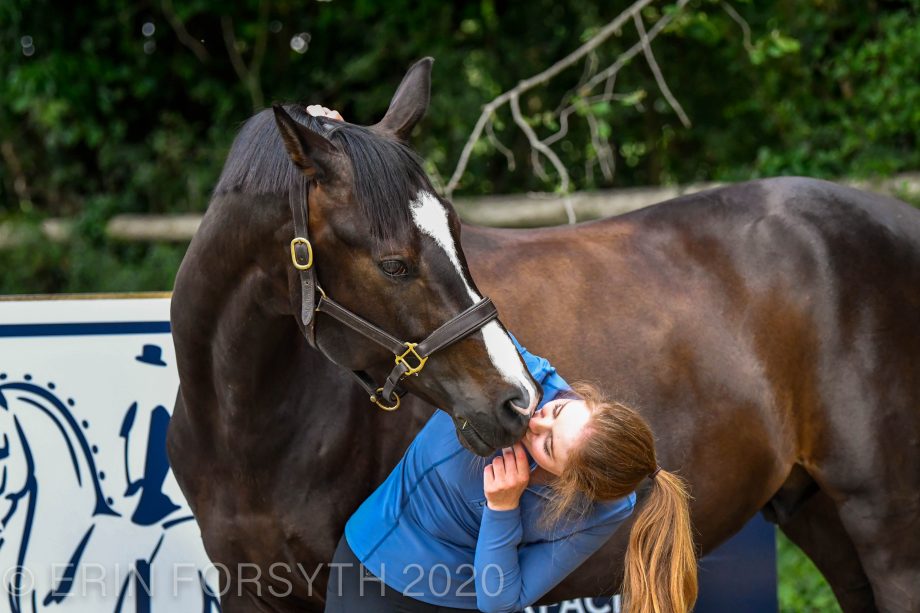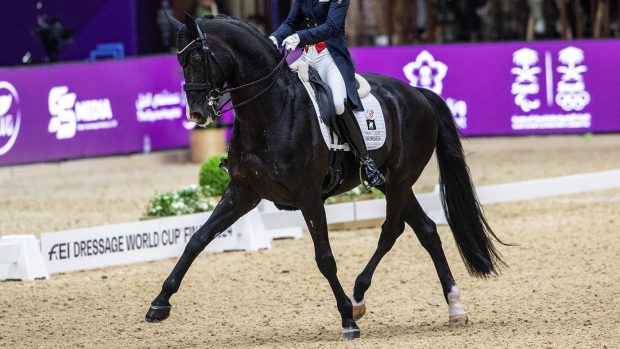Hi all and welcome back!
As I write this, I am having a rare day off. I used to feel great guilt about having a day off. I always want to be around the horses 24/7, but after working for 12 weeks straight during lockdown, I truly ran myself into the ground. I might add no one makes me work this hard, I choose to do that. But as the saying goes, you can’t pour from an empty cup! I now enjoy the odd day off to recharge my batteries, so here we are.
With an ease to lockdown and a glimmer of hope on the horizon in the form of competitions returning, things are beginning to look up. Sadly during lockdown Simba sustained a small injury. His weekly routine used to include two sessions on the wonderful salt water treadmill at New Hatches. With only essential travel permitted, this obviously had to come to a stop. It has been a tough time for me, but it does massively highlight the importance of maintaining a sport horses routine. Unfortunately this situation was out of my control, but with an ease in quarantine he is now back at the treadmill as part of his rehab programme. Keeping fingers crossed he will be back dancing soon!

Simba bossing Sirocco around
So with Simba having an unscheduled summer holiday (lucky boy…!), I have been able to focus more of my energy into Sirocco. Like Simba, he is now seven and I’ve been riding him since he was five, when I took over the ride *aka stole the ride* from my sister Samantha. He is a real darling of a horse and we did two elementaires back in the winter, all with scores over 70%. But with no more shows to aim for, I’ve been able to progress his training more.
I have often wondered whether only riding a horse up the competition levels is actually that beneficial for their training. I find that a lot of the lower level tests, from novice to some mediums, encourage the horse to do things that you then want them to completely forget by the time you reach the higher levels. For example, in one elementary test you have to perform canter, trot, canter over the short diagonal. But by two levels up, you need to do a flying-change in the same place. For a young horse this can be very confusing. If you spend a year at elementary level encouraging this, it comes as no surprise when the horse mentally struggles with the next demand to do a flying-change in the very same spot that you’ve trotted over in the past. To avoid confusing Sirocco and causing upset, I only did the elementary moves for a few weeks and then taught him changes. This worked really well with him, as the canter-trot-canter transition wasn’t too embedded in his brain and made it easy to progress to the flying-change over that short diagonal. Now a few months down the line, he is happy to do both with no upset.

Sirocco
Now that Sirocco’s canter work is coming along nicely, I have started testing him more. Sirocco is more inclined to the side of laziness, so we keep things exciting and upbeat for him. We can now do serpentines of changes, as well as leg-yield out to the 3/4 line, forward change and back into leg-yield to the track for another change. Not only does this massively help with the straightness of the change, the suppleness of the leg-yield, the overall balance and forward-thinking. It also serves as the foundation blocks to later learning the canter zig zag of the grand prix (GP) too.
My next step with that will be counting the strides. He is quite far still from being able to do it in a half pass, but this is my starting point. If I start playing with these moves now and make them fun and easy for him, I’m confident that he will later find the GP work easy. We have also started some work towards canter pirrouttes, starting small with getting a better collection and sit on the hind end. He finds this pretty easy already, with the impulsion and bend through his body being his biggest hurdle. So I make it fun and easy for him, mainly focussing on the overall control that he himself has over his canter. We go from cowboy canter (up out the stirrups doing big circuits of the school in whatever frame he wants, with me encouraging him to see how big and fast he can go), to bringing it right back to a small collected canter that I could do a nice walk transition from, to back out to the cowboy canter. This allows him to gain both strength and confidence in bringing the weight back and getting that push, all while having fun.

Me with Sirocco
As for trot, he is not a naturally talented mover. His canter and walk are big and balanced, but his trot is reminiscent of that of my 13.2hh pony. Having taught him all lateral movements within his ‘baby trot’, I then felt he was ready to start the process of ‘big trot’. To do this, I did what I learnt on Apollo, aged 14. We teach them Spanish walk very early on. This isn’t just a fun trick they do, but a way to get them to lift the shoulders and move forward through their bodies in an uphill manner. When they have learnt to do a proper Spanish walk, where they walk forward lifting each fore leg in turn, while tracking up with the corresponding hind leg and staying in a good outline throughout, we then teach them Spanish trot. As the name suggest, this is the same as the walk.
In Sirocco’s case, it requires help from the ground. So from on top I keep him in a small trot and mum follows, gently tapping behind the knee to encourage him to strike forward. A few times though, mum and I have had to swap and she jumps on board, as the person on the floor often ends up needed to do a lot of running beside (the sight of mum riding in her yard boots and my hat, while I run beside in my long boots is a very funny sight for the liveres…), Eventually, this will become his passage, which will in turn promote more lift, push and height in his regular collected trot.
Article continues below…
You might also be interested in:

Joanna Thurman-Baker’s dressage blog: comparison really is the thief of joy
Joanna talks about mental health and online presence
I really love working with Sirocco, he is every part the supermodel of a horse, as these photos taken by my friend Erin, suggest (Simba obviously had to get in on the action too and was his usual cheeky self…). I’m super-hopeful that by using these methods I can help Sirocco turn into the superstar I know he will be. If anyone is interested in more of my training methods and would like some of my input, I am available for socially distanced lessons, so drop me a message.
That’s all from me for now— I think I will go use the rest of my day off to walk the dogs and curl up with DisneyPlus!
Joanna
We are continuing to produce Horse & Hound as a weekly magazine during the coronavirus pandemic, as well as to keep our website at horseandhound.co.uk up to date with breaking news, features and more. Click here for info about magazine subscriptions and access to our premium H&H Plus content online.




